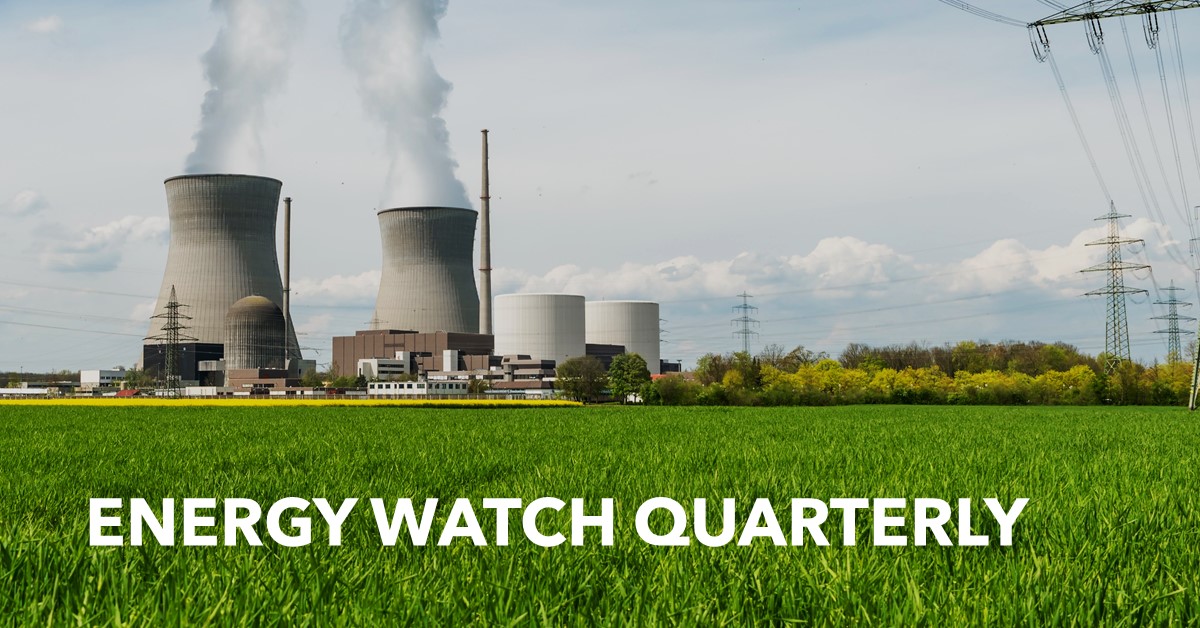The Impact of Renewable Development on NYISO Capacity Prices | Capacity Watch Blog
Capacity Watch™ provides clients with an in-depth outlook on PJM, ISO-New England, and NYISO Capacity prices. In this blog, we highlight a portion of the analysis in the NYISO section of the recently published Q2 Capacity Watch™.
Changes to the New York markets’ supply and demand levels and declining peak load forecasts have sent capacity prices in all directions. One thing is certain, renewable capacity upgrades, particularly offshore wind, will make up an increasingly large portion of NYISO’s resource mix in the future in order to achieve CLCPA levels.
New York’s commitment to renewable development has increased considerably in the past year with the approval of CLCPA’s minimum statewide goal of 9 GW of offshore wind by 2035. The RTO is seeing updated timelines for offshore wind development projects, new wind projects entering the queue, and flexible procurement regulations that ensure an adequate amount of wind projects are completed. Given the recent emphasis on ORECs and that the NY Tier 4 REC Solicitation is underway, ESAI’s forecast has built-in a significant portion of renewables in the short-term, and with future solicitations that will result in several hundred MW of additional offshore wind additions each year starting in 2028.
The upward trajectory of renewables has also shaped LCR and IRM expectations. While it is likely both values reduce in the short term, the impact of renewables will take hold and drive NYISO IRM percentage up after 2022. In regards to future LCR, our Zone J and Zone G-J Locality outlook is driven by a variety of BSM evaluations that we cover in detail in our Q2 Capacity Watch report.
In the short term, NYISO is seeing extremely low clearing prices in Zone J and G-H Locality as a result of year-over-year reduction in LCR and unimpressive peak loads. On the other hand, NYCA and Zone K prices are higher than normal due to retirements and an elevated IRM. ESAI Power, however, does not expect to see a similar ICAP market in the long term….government regulations, generation retirements and additions, and changes to LCR and IRM and peak load forecasts will drive substantial changes to NYISO’s capacity prices.
Subscribers can check out our long-term ICAP forecast in this quarter’s capacity watch! If you’re not a subscriber, fill out this form or email [email protected] to enquire about a free trial.
For more information about our Capacity Forecasts, see our Capacity Market Coverage.
Learn About Renewable Energy
ESAI Power evaluates the renewable energy issues, markets and trends in the PJM, New York, and New England market footprints. Coverage includes solar, onshore and offshore wind, hydroelectric, and storage. For each region, ESAI Power details the regulatory and market factors that impact the supply and demand balance for Class I Renewable Energy Credits (RECs) and projects the supply and demand balance of Class I RECs through 2030.
Learn About Capacity Watch Quarterly
Capacity WatchTM – Provides quarterly analysis of capacity markets and policy issues that impact capacity price outcomes over a 10-year forecast horizon. Also provided is an evaluation of the outlook for the construction of each generation project in PJM, New York, and New England. Every project is assigned a “probability of completion” factor in percentage terms which is then applied to develop a forward assessment of likely capacity additions within a particular pool. The impacts of new generation and retirements on reserve margin surpluses and forward capacity market values is updated and presented in each issue. ESAI’s project database (Project Evaluation ProgramTM) is updated and presented with each issue.
Learn About Energy Watch Quarterly
Energy Watch QuarterlyTM provides a quarterly analysis of market and policy issues affecting energy pricing dynamics over the next 10-year period for both the power and natural gas sectors. This analysis includes forecasts of pool-wide and zonal energy prices in New England, New York, and PJM, including forecasts of fuel inputs. Supporting assumptions are provided in each quarterly report.






